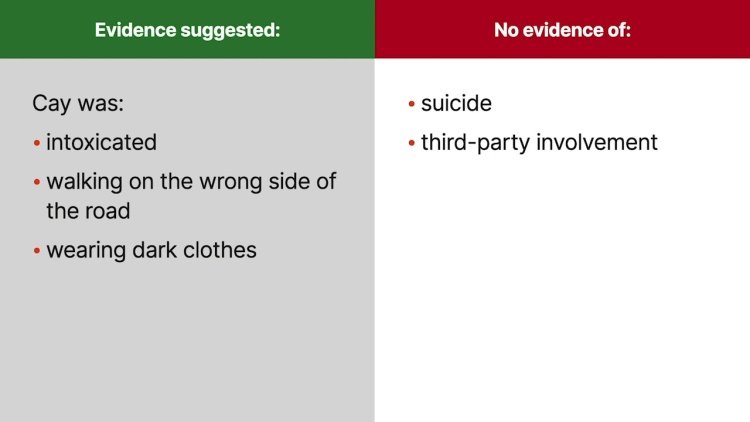Cay v. State of Louisiana, Department of Transportation and Development
Louisiana Supreme Court
631 So. 2d 393 (1994)
- Written by Angela Patrick, JD
Facts
Louisiana’s Department of Transportation and Development (the department) (defendant) replaced an old road bridge. The department was aware that pedestrians had used the old bridge to cross the river below. Despite this awareness, the department installed railings only 32 inches high, the standard minimum for vehicular bridges, rather than 36 inches high, the standard minimum for pedestrian bridges. One night, 27-year-old Keith Cay left a bar and crossed the bridge on foot. His body was discovered below the bridge five days later. Evidence suggested that Cay had been intoxicated and crossed the bridge on the wrong side of the road for pedestrian traffic, while wearing dark clothes. Nothing conclusively established why Cay fell from the bridge. Police speculated that Cay had stumbled or been startled by an oncoming car, prompting him to fall over the railing. Cay’s parents (plaintiffs) filed a wrongful-death action, alleging that the department had acted negligently by installing railings too low for pedestrians. The trial court determined that the department’s low railings were 60 percent responsible for Cay’s fall and Cay’s intoxication was 40 percent responsible. The trial court entered judgment for Cay’s parents. The appellate court affirmed. The Louisiana Supreme Court agreed to review the case.
Rule of Law
Issue
Holding and Reasoning (Lemmon, J.)
What to do next…
Here's why 899,000 law students have relied on our case briefs:
- Written by law professors and practitioners, not other law students. 47,000 briefs, keyed to 994 casebooks. Top-notch customer support.
- The right amount of information, includes the facts, issues, rule of law, holding and reasoning, and any concurrences and dissents.
- Access in your classes, works on your mobile and tablet. Massive library of related video lessons and high quality multiple-choice questions.
- Easy to use, uniform format for every case brief. Written in plain English, not in legalese. Our briefs summarize and simplify; they don’t just repeat the court’s language.









